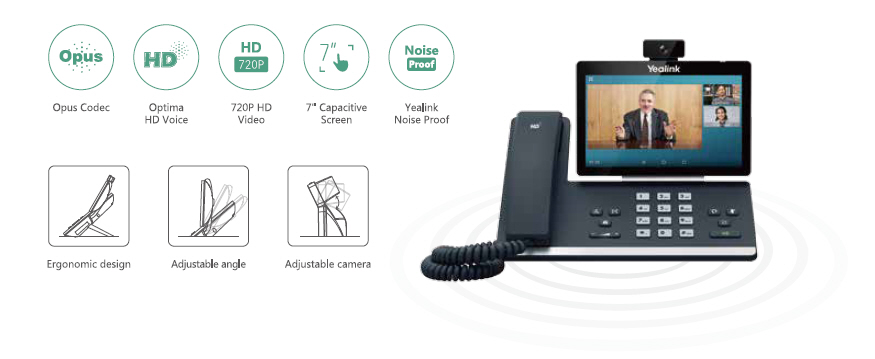Introduction
In an age where digital communication is paramount, the significance of reliable and efficient phone systems cannot be overstated. Businesses worldwide are increasingly adopting Voice over Internet Protocol (VoIP) technology, which allows voice calls to be made over the internet rather than traditional telephone lines. One of the most versatile components of VoIP technology is Session Initiation Protocol (SIP) trunks. This article delves into Exploring the Interoperability of SIP Trunks with Various VoIP Phone Systems, examining how businesses can leverage this technology to enhance their communication strategies.
Exploring the Interoperability of SIP Trunks with Various VoIP Phone Systems
Understanding interoperability in the context of SIP trunks and VoIP phone systems is crucial for businesses aiming to streamline their communication processes. SIP trunking provides a virtual connection between a business’s private branch exchange (PBX) and the public switched telephone network (PSTN). This means that organizations can make and receive calls using their existing internet connection instead of relying on conventional phone lines.
Understanding SIP Trunks
SIP trunks serve as a bridge that links a company's VoIP phone system to external networks. This technology allows for multiple simultaneous calls over a single internet connection, making it a cost-effective solution for organizations that require robust telecommunication capabilities.
What is VoIP Technology?
VoIP stands for Voice over Internet Protocol, a technology that converts voice into digital signals, enabling phone calls to be made via the internet. Unlike traditional landlines, VoIP offers flexibility, scalability, and cost savings.

The Role of PBX in VoIP Systems
A Private Branch Exchange (PBX) is an internal telephone network within an organization that manages incoming and outgoing calls. It plays a pivotal role in integrating various communication channels, making it essential for any business utilizing VoIP technology.
Benefits of Using SIP Trunks with VoIP Phone Systems
Integrating SIP trunks with VoIP phone systems provides numerous advantages:
- Cost Efficiency: By reducing reliance on traditional phone lines. Scalability: Making it easier to add or remove lines based on demand. Flexibility: Supporting remote work by allowing employees to connect from anywhere. Rich Features: Such as call forwarding, voicemail-to-email, and video conferencing.
Key Features of SIP Trunking
Scalability and Flexibility
One of the standout features of SIP trunking is its scalability. Companies can easily adjust https://www.tumblr.com/foultriumphland/770004484454842368/maximizing-roi-the-financial-benefits-of their call capacity without needing additional hardware or complex setups.
Enhanced Call Quality
SIP trunks often provide superior call quality due to advanced compression algorithms and error correction techniques.
Integration with Existing Systems
SIP trunks can integrate seamlessly with most existing PBX systems, allowing businesses to retain their current infrastructure while enhancing capabilities.
Compatibility with Popular VoIP Phone Systems
Overview of Major VoIP Phone Systems
Several leading VoIP phone systems support interoperability with SIP trunks. Understanding these systems can help businesses choose the right solution for their needs.
1. Cisco Unified Communications Manager
- Highly scalable and feature-rich system. Supports integration with various SIP trunk providers.
2. Avaya IP Office
- Offers extensive features tailored for small to medium-sized enterprises (SMEs). Seamless integration with multiple SIP providers.
3. Mitel MiCloud
- Provides cloud-based solutions for enhanced accessibility. Compatible with various SIP trunk services for effective communication management.
Challenges in Integrating SIP Trunks with VoIP Phones
While there are numerous benefits, integrating SIP trunks into existing systems isn't without challenges:
Network Configuration Issues
Improperly configured networks may lead to call quality issues or dropped calls. Businesses must ensure their network settings align with best practices for optimal performance.
Compatibility Concerns
Not all PBX systems are created equal; some may face compatibility issues when integrating SIP trunks due to outdated firmware or protocols.

Best Practices for Maximizing Interoperability
To ensure successful integration between SIP trunks and various VoIP phone systems, consider these best practices:
1. Conduct Thorough Research
Before selecting a provider, assess your current infrastructure and future needs carefully.
2. Test Compatibility
Perform compatibility tests before committing fully to ensure smooth functionality across platforms.
3. Monitor Network Performance
Constantly monitor your network performance post-integration to identify potential bottlenecks or other issues early on.
Evaluating Your Current Setup: Is It Time for Change?
Businesses must periodically evaluate their telecommunications setup to determine if it's still meeting their needs effectively:
- Are you facing frequent downtime? Are costs escalating without corresponding value? Is your team struggling with outdated technology?
If you answered “yes” to any questions above, it might be time to consider switching your approach toward more modern solutions like incorporating SIP trunks into your operations alongside your existing VoIP phone system.
FAQs about Exploring the Interoperability of SIP Trunks with Various VoIP Phone Systems
1. What are SIP trunks?
SIP trunks act as virtual connections that enable voice communication over the internet using standard protocols.
2. How do I know if my current PBX supports SIP trunking?
Check your PBX documentation or consult your provider's technical support team regarding compatibility features concerning SIP trunking.
3. Can I use multiple providers simultaneously?
Yes! Most modern PBX systems allow you to configure multiple SIP trunk providers simultaneously for redundancy and cost management purposes.
4. What are common issues faced during integration?
Common issues include network configuration problems, compatibility concerns between different devices/software versions, and insufficient bandwidth leading to poor call quality.
5. How does using a cloud-based solution differ from on-premise setups?
Cloud-based solutions typically offer more flexibility regarding remote access while eliminating hardware maintenance responsibilities associated with on-premise setups but may rely heavily on stable internet connectivity conditions.
Conclusion
In conclusion, exploring the interoperability of SIP trunks with various VoIP phone systems opens up new avenues for organizations looking to upgrade their communication infrastructure efficiently. By understanding both technologies' functionalities and benefits, businesses can make informed decisions when investing in telecom solutions that align seamlessly with their operational goals while maximizing cost-effectiveness along the way.
By embracing innovation through this combination—leveraging what becomes possible through employing interoperable technologies—you position yourself ahead within an increasingly competitive landscape!